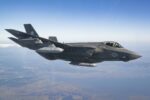India’s Ministry of Defence (MoD) has approved a sweeping ₹79,000 crore (~$9.5 billion) defence acquisition package focused on indigenously developed systems. The decision significantly boosts Indian defense manufacturers such as Hindustan Aeronautics Limited (HAL), Bharat Electronics Limited (BEL), and other state-linked OEMs. Key programs include the LCA Tejas Mk-1A fighter jets, BrahMos missiles for the Navy, and next-generation air defense systems like Akash-NG.
Strategic Push for Indigenous Systems Under ‘Make in India’
The Defence Acquisition Council (DAC), chaired by Defence Minister Rajnath Singh on November 30th 2023, cleared proposals worth ₹2.23 lakh crore (~$27 billion), of which over ₹79,000 crore is earmarked for immediate procurement under the ‘Buy (Indian-Indigenously Designed Developed and Manufactured)’ category. This aligns with India’s ongoing push to reduce import dependency and strengthen its domestic military-industrial base.
The DAC approvals are part of a broader strategic aim to enhance self-reliance in critical defense technologies while simultaneously modernizing India’s armed forces. The focus areas include air combat platforms, precision-guided munitions (PGMs), naval strike capabilities, armored vehicles modernization, and layered air defense systems.
LCA Tejas Mk-1A Order Strengthens HAL’s Fighter Jet Portfolio
One of the marquee elements of the procurement package is an additional order for 97 Light Combat Aircraft (LCA) Tejas Mk-1A fighters from HAL. Valued at approximately ₹67,000 crore (~$8 billion), this is one of the largest indigenous fighter orders in Indian history.
The LCA Tejas Mk-1A is a fourth-generation+ multirole fighter developed by Aeronautical Development Agency (ADA) with production by HAL. It features improved avionics including AESA radar (EL/M-2052 or Uttam AESA in future variants), electronic warfare suites developed by DRDO’s DARE lab, beyond visual range missile capability via Astra integration or I-Derby ERs from Rafael Advanced Defense Systems.
This new order supplements the earlier contract for 83 Tejas Mk-1As signed in February 2021 worth ₹48,000 crore. Deliveries from that batch are expected to begin in 2024–25. The additional 97 aircraft will likely be delivered over a span of 6–8 years post current order completion.
Operational Impact
- Will replace ageing MiG-21 squadrons across IAF
- Enhances indigenous content to >60%
- Boosts export viability; Argentina and Egypt have expressed interest
BrahMos Naval Variant Orders Enhance Maritime Strike Capability
The DAC also cleared procurement of BrahMos supersonic cruise missiles for the Indian Navy under Buy (Indian-IDDM). These will equip frontline warships including Rajput-class destroyers’ successors and Project 15B/Project 17A vessels.
The BrahMos missile—developed jointly by India’s DRDO and Russia’s NPO Mashinostroyenia—is a key component of India’s anti-access/area denial (A2/AD) strategy in the Indo-Pacific region. The variant being procured includes upgraded seeker technology and extended range (>400 km) enabled after India joined the MTCR regime.
This decision follows successful test firings from both land-based coastal batteries and naval platforms throughout 2023. The new batch will likely feature vertical launch system compatibility and advanced guidance packages suited for maritime strike missions against high-value enemy targets such as surface combatants or logistics ships.
Akash-NG Air Defense System Boosts BEL Portfolio
Bharat Electronics Limited stands to benefit significantly from orders related to next-generation air defense systems—specifically Akash-NG (New Generation). This system is an upgraded variant of the original Akash SAM system with improved reaction time (~10 sec vs ~20 sec), dual-pulse solid rocket motor propulsion for higher maneuverability (~40g), canards-based control surfaces for better terminal accuracy and active radar seeker guidance replacing command guidance used earlier.
The Akash-NG has been tested successfully multiple times since January 2021 against high-speed aerial targets at various altitudes ranging between low-level cruise missiles to medium-altitude UAVs or aircraft threats. It fills a critical gap between SHORAD systems like Spyder-QRSAM hybrids and long-range interceptors like S-400 or Barak-8 LR-SAMs deployed by IAF/IN respectively.
System Highlights:
- Range: ~70 km effective engagement envelope
- Seeker: Active RF seeker with ECCM features
- Mobility: Mounted on indigenous wheeled platforms; network-centric capable via C4I links
- Designed for quick deployment; shoot-and-scoot capability
Arjun Mk-1A MBT Procurement Adds Firepower to Armoured Corps
The DAC also approved procurement of an additional batch of Arjun Mk-1A main battle tanks developed by DRDO’s CVRDE lab with production by Heavy Vehicles Factory Avadi under OFB/DPSU structure now integrated into AVNL post corporatization reforms.
The Arjun Mk-1A features over 70 upgrades compared to its predecessor including:
- Kanchan composite armor + ERA panels integration
- Improved fire control system with thermal sights + auto-tracking capability
- Lahat ATGM firing through main gun (120 mm rifled)
- BMS integration and enhanced mobility package via upgraded transmission/suspension units
This move supports India’s goal of maintaining a mixed fleet alongside Russian-origin T-series tanks while gradually increasing domestic content in heavy armor categories—a sector where private participation remains limited but growing through partnerships like L&T’s FICV/FRCV bids.
Tactical Implications Across Services & Industrial Ecosystem Impact
This round of approvals reflects India’s shift toward platform-centric modernization supported by indigenous R&D ecosystems led by DRDO labs but increasingly involving DPSUs like BDL/BEL/HAL as well as private Tier-II vendors supplying subsystems such as radars (Bharat Dynamics Ltd.), composites structures (Taneja Aerospace), propulsion modules etc.
Tactically:
- IAF: Gains expanded fleet strength with LCA induction; layered AD coverage improved via Akash-NG → reduces reliance on foreign SHORAD/LORAD imports.
- Navy: Enhanced standoff strike options via BrahMos → critical amid rising PLAN presence in IOR/South China Sea corridors.
- Army: Modernized armored thrust capability via Arjun MBTs → supports offensive posture against western front scenarios while reducing T-series dependency amid Russian supply chain uncertainties post Ukraine war sanctions impact.
Ecosystem Effects:
- DPSUs expected surge in order books FY24–FY30 → positive revenue visibility for HAL/BEL/BDL/MDL etc.
- Sustained employment generation across Tier-I/Tier-II MSMEs engaged in avionics/casting/fabrication/sensor domains → supports Atmanirbhar Bharat goals beyond slogans into structured industrial growth models aligned with capability needs rather than just offset obligations alone.
Conclusion: Strategic Signal Beyond Stock Market Optimism
The ₹79,000 crore arms acquisition approval is not merely a stock market event favoring listed defense PSUs—it represents a deliberate doctrinal pivot toward self-reliant force structuring across all three services. While firms like HAL and BEL stand to gain financially from these orders—as reflected in recent analyst upgrades—the broader significance lies in India’s maturing ability to field credible indigenous solutions across land-air-sea domains within compressed timelines amidst regional security fluxes including China border tensions and Indo-Pacific contestations involving QUAD-AUKUS dynamics.










